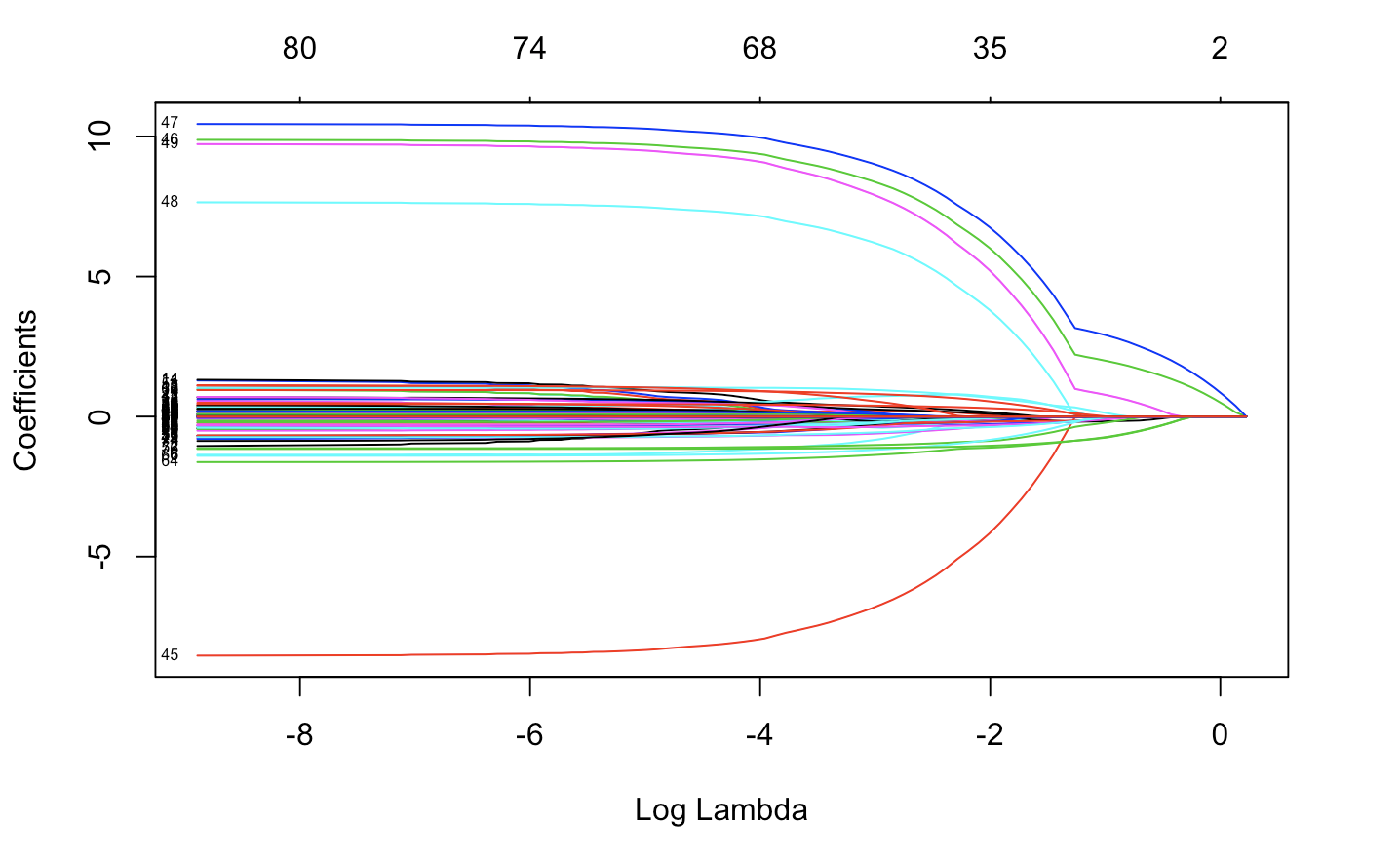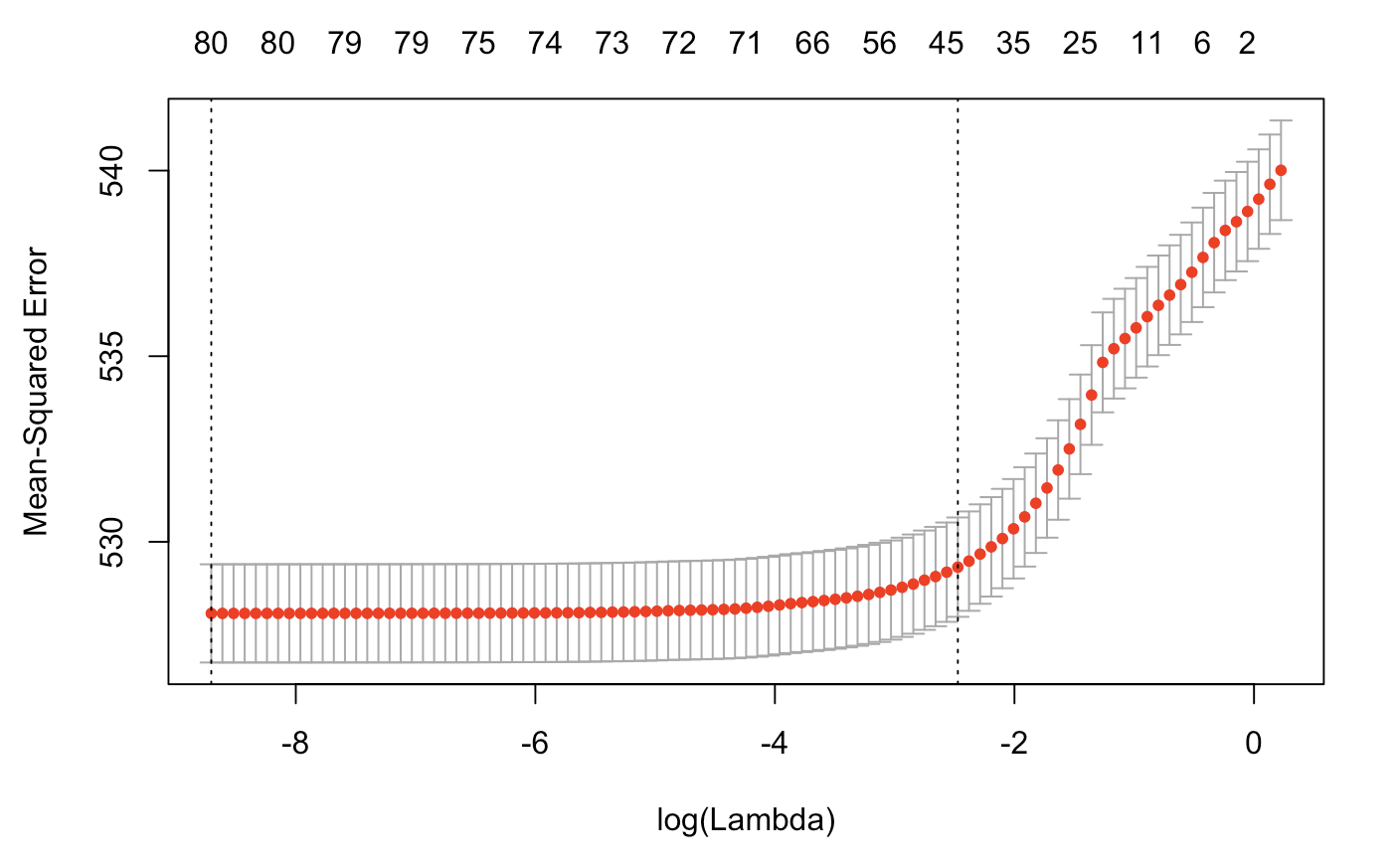I am performing lasso regression in R using glmnet package:
fit.lasso <- glmnet(x,y)
plot(fit.lasso,xvar="lambda",label=TRUE)
Then using cross-validation:
cv.lasso=cv.glmnet(x,y)
plot(cv.lasso)
One tutorial (last slide) suggest the following for R^2:
R_Squared = 1 - cv.lasso$cvm/var(y)
But it did not work.
I want to understand the model efficiency/performance in fitting the data. As we usually get R^2 and adjusted R^2 when performing lm() function in r.



